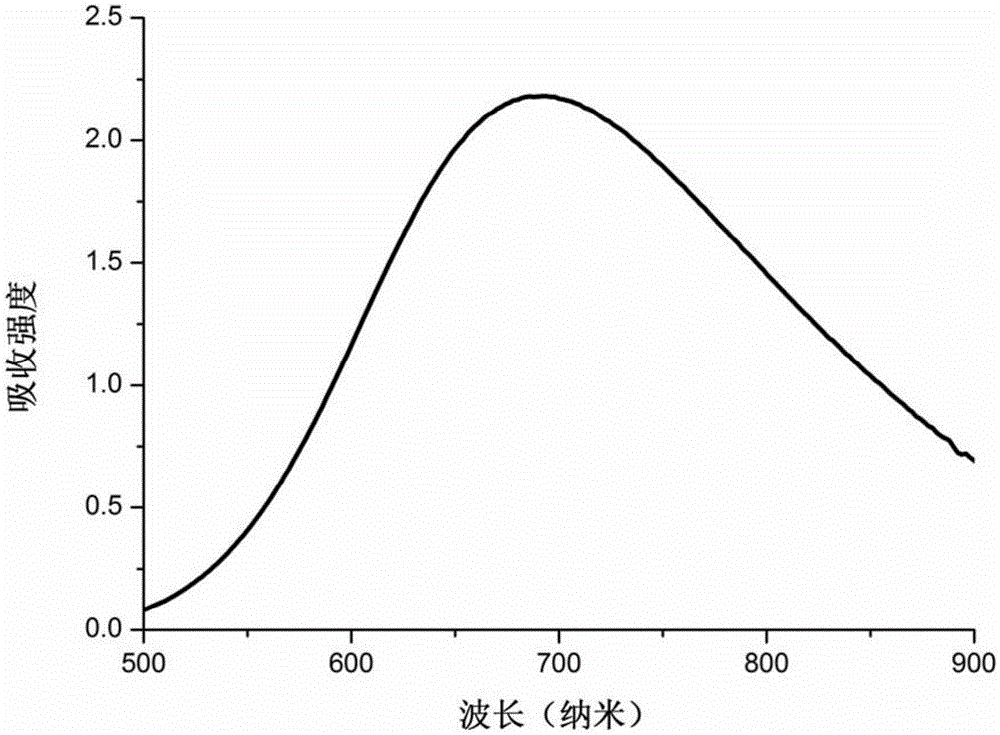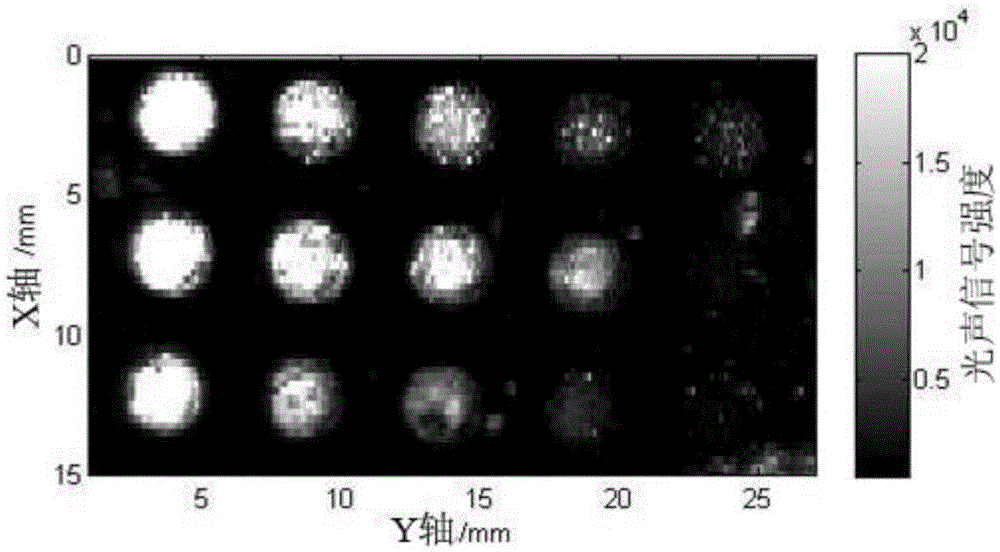Prussian blue nano-particle contrast agent, preparation method and application thereof
A nanoparticle, Prussian blue technology, applied in the field of biomedical materials, can solve the problems of insolubility in water and limited application, and achieve the effect of simple operation, high repeatability, and good photothermal stability.
- Summary
- Abstract
- Description
- Claims
- Application Information
AI Technical Summary
Problems solved by technology
Method used
Image
Examples
Embodiment 1
[0049] This embodiment provides a method for preparing a Prussian blue nanoparticle contrast agent, wherein the method includes the following steps:
[0050] 284 mg of ammonium ferrocyanide and 400 mg of citric acid are dissolved in 50 ml of water to form solution A. The concentration of ammonium ferrocyanide in solution A is 0.006 g / ml, and the concentration of citric acid is 0.008 g / ml;
[0051] 322 milligrams of ferric chloride, 400 milligrams of citric acid are dissolved in 50 milliliters of water to form solution B, the concentration of ferric chloride in solution B is 0.006 g / ml, and the concentration of citric acid is 0.008 g / ml;
[0052] Add 7 milliliters of polyethylene glycol with a molecular weight of 400 into solution A, and mix well to obtain solution C;
[0053] Add solution B to solution C and mix well to obtain solution D;
[0054] Transfer solution D to a stainless steel autoclave with polytetrafluoroethylene lining, put the autoclave into an oven, set the ...
Embodiment 2
[0058] This embodiment provides a method for preparing a Prussian blue nanoparticle contrast agent, wherein the method includes the following steps:
[0059] 368 mg of potassium ferrocyanide and 400 mg of citric acid are dissolved in 50 ml of ethanol to form solution A. In solution A, the concentration of potassium ferrocyanide is 0.007 g / ml, and the concentration of citric acid is 0.008 g / ml;
[0060] 300 mg of ferrous chloride and 400 mg of citric acid are dissolved in 50 ml of ethanol to form solution B, the concentration of ferrous chloride in solution B is 0.005 g / ml, and the concentration of citric acid is 0.008 g / ml;
[0061] Add 7 milliliters of polyethylene glycol with a molecular weight of 400 into solution A, and mix well to obtain solution C;
[0062] Add solution B to solution C and mix well to obtain solution D;
[0063] Transfer solution D to a stainless steel autoclave with polytetrafluoroethylene lining, put the autoclave into an oven, set the temperature ...
Embodiment 3
[0067] This embodiment provides a method for preparing a Prussian blue nanoparticle contrast agent, wherein the method includes the following steps:
[0068] Dissolve 250 mg of sodium ferrocyanide and 400 mg of citric acid in 50 ml of ethylene glycol to form solution A. In solution A, the concentration of sodium ferrocyanide is 0.005 g / ml, and citric acid The concentration is 0.008 g / ml;
[0069] 322 mg of ferric chloride and 400 mg of citric acid are dissolved in 50 ml of ethylene glycol to form solution B. In solution B, the concentration of ferric chloride is 0.006 g / ml, and the concentration of citric acid is 0.008 g / ml;
[0070] Add 7 milliliters of polyethylene glycol with a molecular weight of 400 into solution A, and mix well to obtain solution C;
[0071] Add solution B to solution C and mix well to obtain solution D;
[0072] Transfer solution D to a stainless steel autoclave with polytetrafluoroethylene lining, put the autoclave into an oven, set the temperature ...
PUM
| Property | Measurement | Unit |
|---|---|---|
| Particle size | aaaaa | aaaaa |
| Concentration | aaaaa | aaaaa |
Abstract
Description
Claims
Application Information
 Login to View More
Login to View More - R&D
- Intellectual Property
- Life Sciences
- Materials
- Tech Scout
- Unparalleled Data Quality
- Higher Quality Content
- 60% Fewer Hallucinations
Browse by: Latest US Patents, China's latest patents, Technical Efficacy Thesaurus, Application Domain, Technology Topic, Popular Technical Reports.
© 2025 PatSnap. All rights reserved.Legal|Privacy policy|Modern Slavery Act Transparency Statement|Sitemap|About US| Contact US: help@patsnap.com


